![]()
![]()
![]()
Use LEFT and RIGHT arrow keys to navigate between flashcards;
Use UP and DOWN arrow keys to flip the card;
H to show hint;
A reads text to speech;
12 Cards in this Set
- Front
- Back
- 3rd side (hint)
|
The Tale of Genji hand scroll
|
illustrates the novel written by the Heian court lady Murasaki Shikibu ca. 1010.
|
The illustrations were painted on paper about 1100 by more than one court painters; the text was also written by several calligraphers. Apparently court ladies may have also been involved in the project
|
|
|
Yamato-e
|
Purely Japanese style of painting
|
|
|
|
Mono no aware
|
The capacity to be moved by the beauties of nature that often stand for the feelings of people
|
|
|
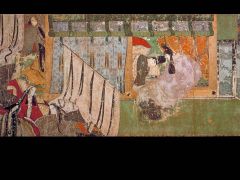
|
Heian Period 1100 CE multiple artists From the chapter “Kashiwagi (Oak Tree) 1”, Yugiri visits his friend
|
Yugiri, Genji's son visits Kashiwagi as he is dying who seduced Genji's wife. He apologizes and dies. Court women represent lack of privacy, Yugiri leaning shows intimacy, no access to outside.
|
|
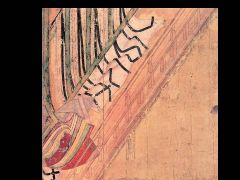
|
happy next to sad colors
the multiple layers of the third princess's kimono white=death tilted space mess of curtains fracture and cheating |
|
|

|
Heian Period 1100 CE multiple artists Kashiwagi 3 (The Oak Tree), from the Tale of Genj, handscroll, ink and colors on paper, early 12th cent.
|
Genji's wife wants to become a nun
father tries to talk her out of it isolation buddhist undercurrent karma because genji did the same thing to the emperors wife |
|
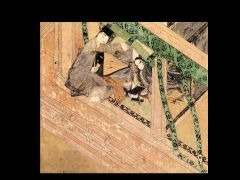
|
Distance between Genji and his wife
Trying to win her over |
|
|
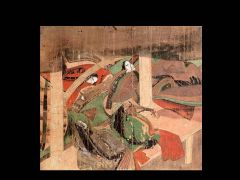
|
The court women are always around
|
|
|
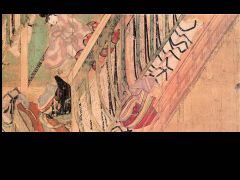
|
Heian Period 1100 CE multiple artists From the chapter “Kashiwagi, 2”, celebration of the birth of Kaoru, son of the Third Princess and Kashiwagi, but publicly acknowledged by Genji as his own
|
Not really his son so it's sad for Genji because his wife betrayed him
|
|
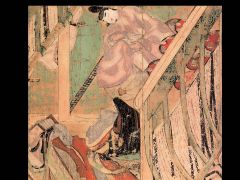
|
Genji is pretending to be happy
Wife wearing white robes |
|
|
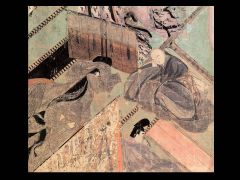
|
disconnect, Genji and his wife's father trying to console the third princess
|
|
|
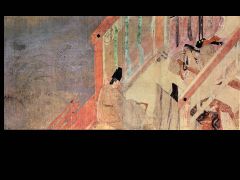
|
Heian Period 1100 CE multiple artists From the chapter “Minori (The Rites)”
|
Dusk, autumn
Hagi plant - expresses sorrow metaphor of last meeting Murasaki is dying compared to cherry blossoms (her youth) Step daughter (wife of emperor) comes to visit her though social convention says she should go to her step daughter to defer to her higher station |

